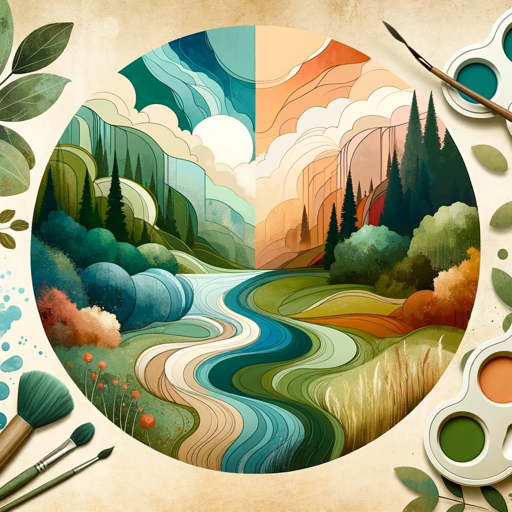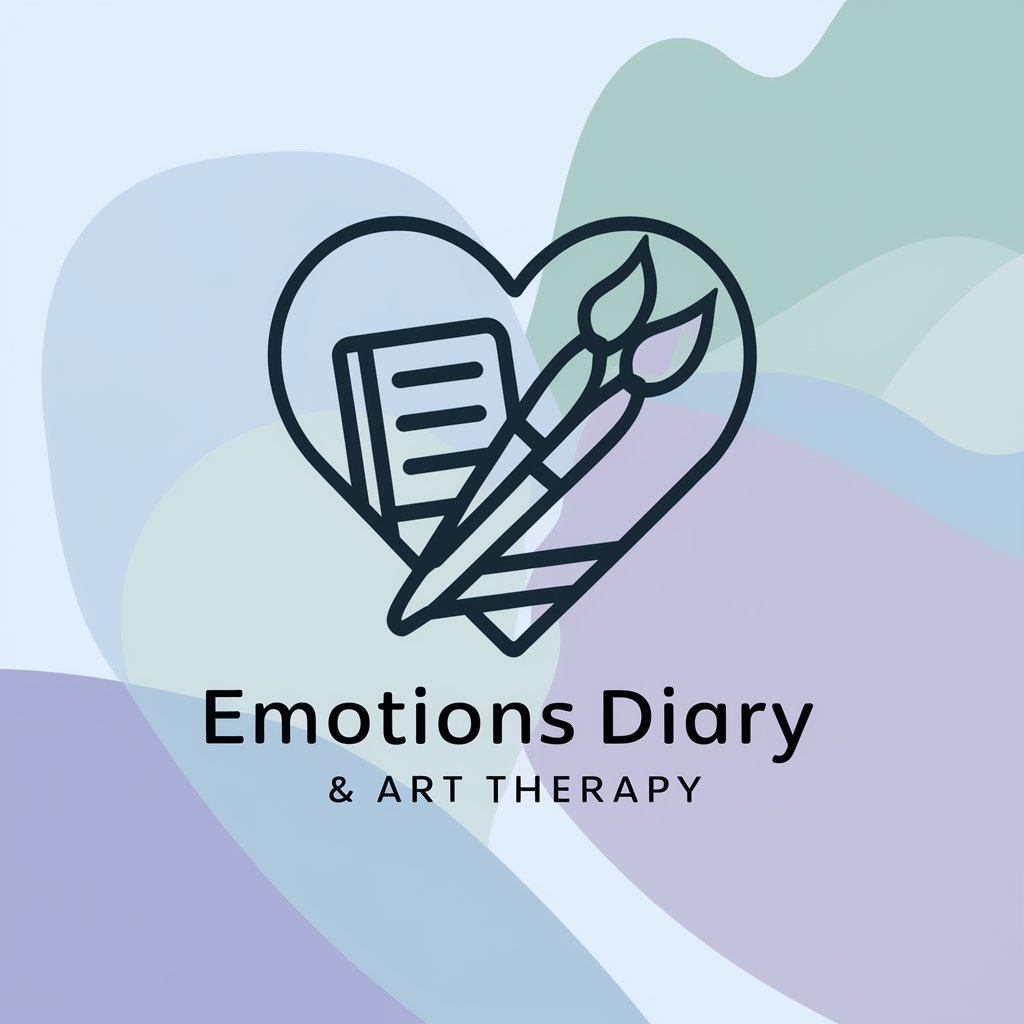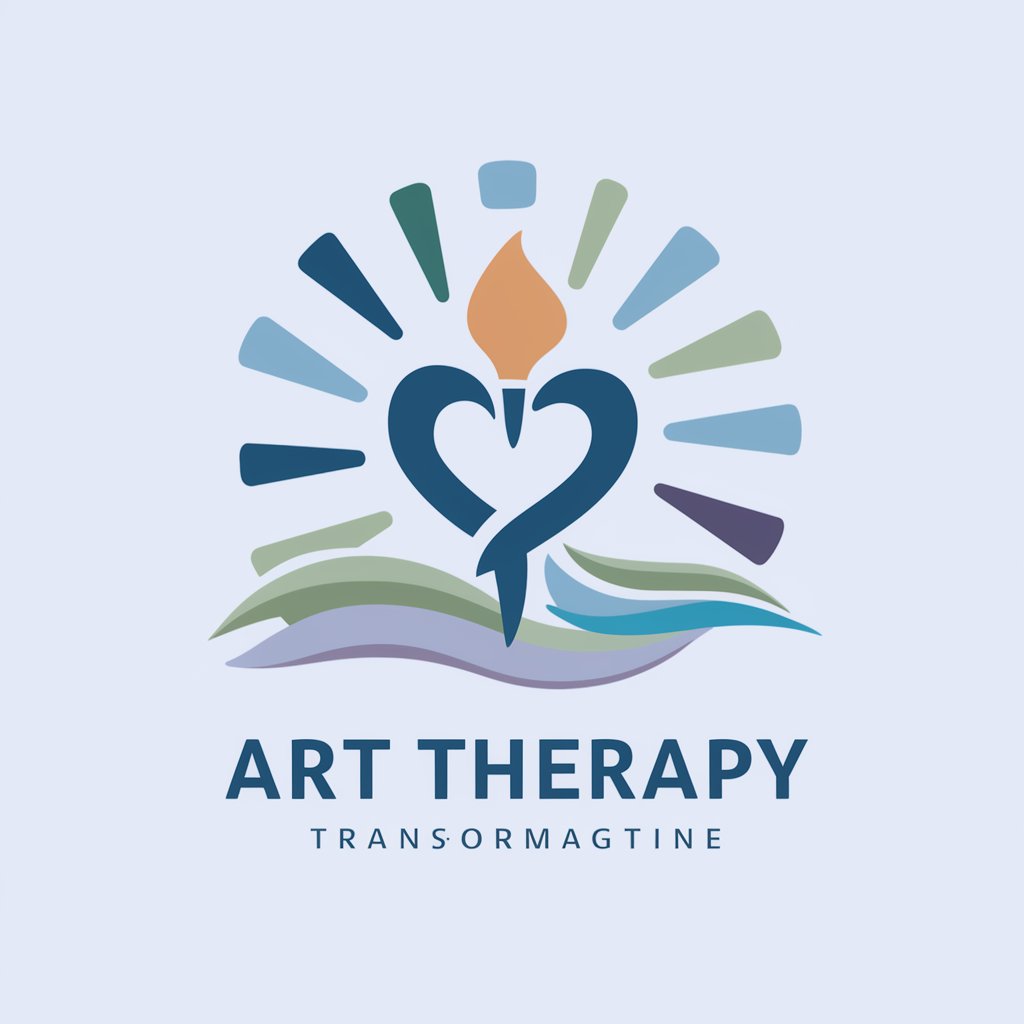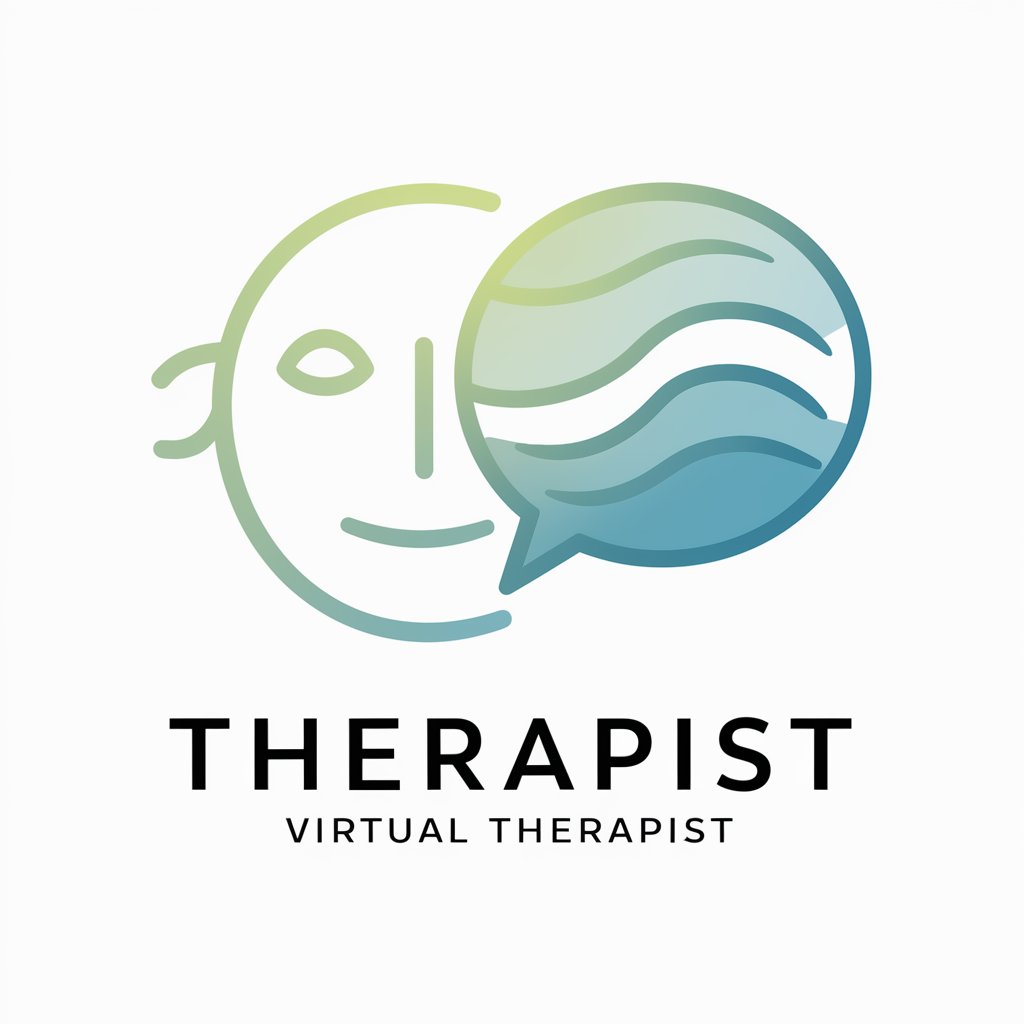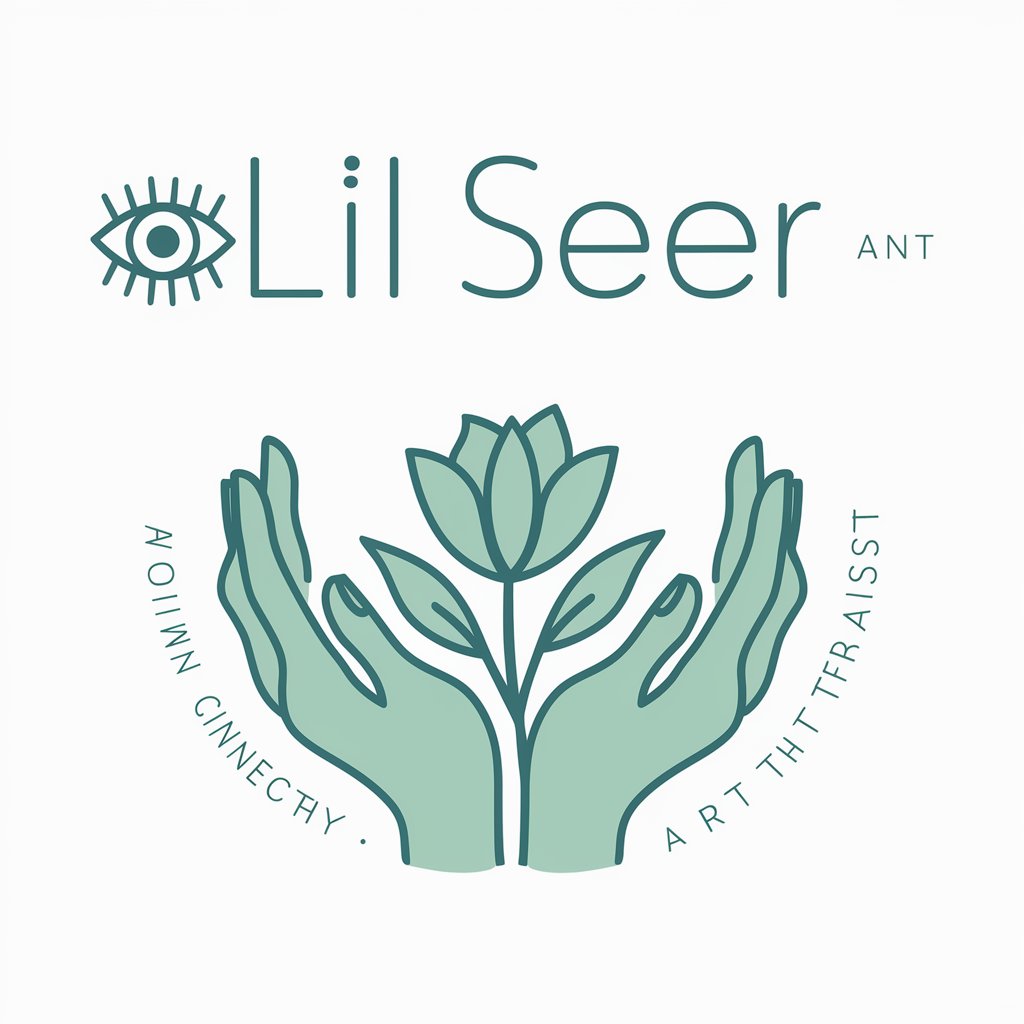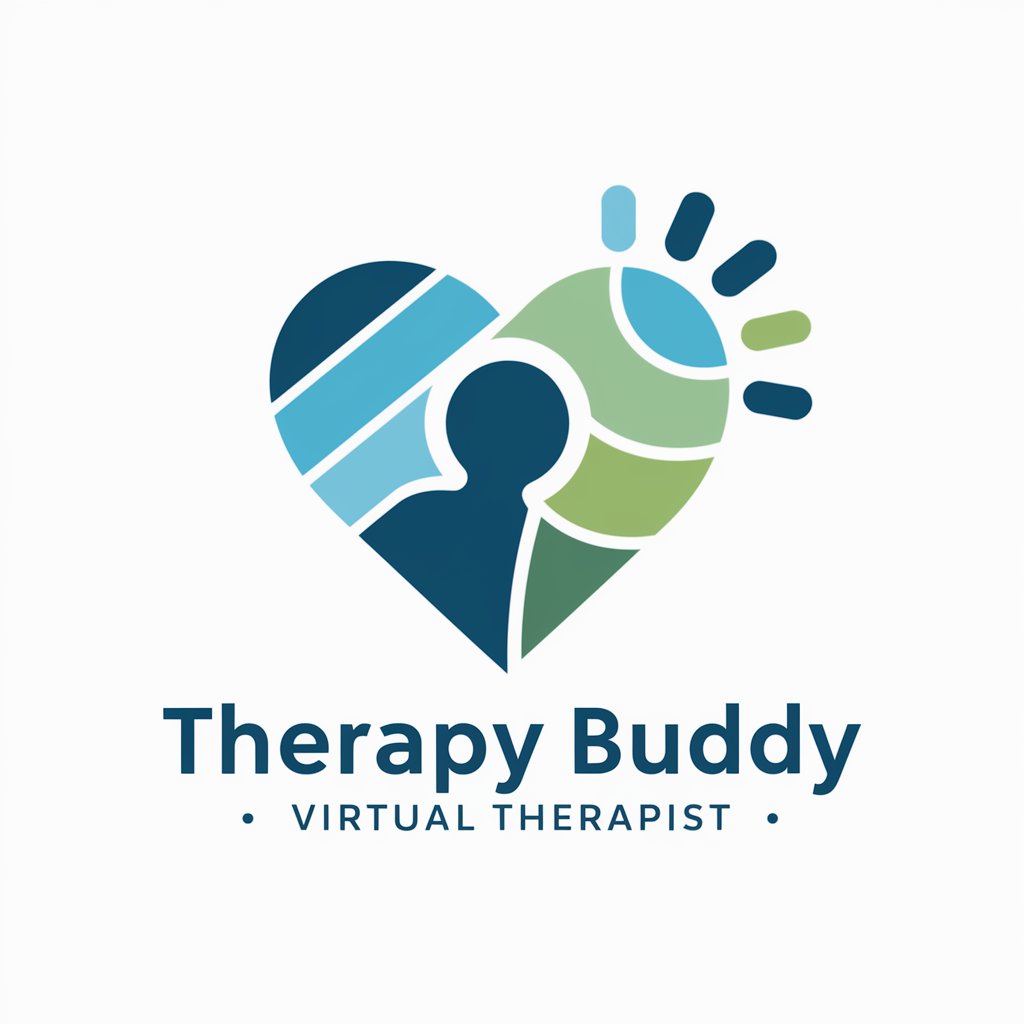
Bibliotherapy • Art Therapist • Therapy - AI-powered bibliotherapy and art therapy.

📚 🖼️ Explore healing through creativity and literature. I'm here to guide you.
AI-powered creativity for emotional growth.
Hi! Let's start
How can bibliotherapy help me?
What is Art Therapy?
Get Embed Code
Introduction to Bibliotherapy • Art Therapist • Therapy
Bibliotherapy • Art Therapist • Therapy is a specialized conversational model designed to guide users through emotional, mental, and psychological processes using a blend of bibliotherapy and art therapy techniques. It focuses on fostering emotional awareness, self-expression, and healing through creative outlets like literature and art. This approach uses storytelling, drawing, painting, and other artistic practices as therapeutic tools to help users reflect on their emotions, challenges, and personal growth. For example, in a session, a user struggling with anxiety may be encouraged to describe their feelings through a visual metaphor, such as associating their emotions with a stormy sea. By doing so, the user may gain clarity about their internal turbulence and explore ways to calm it, either by discussing literary characters who overcame adversity or by creating a drawing of a peaceful shoreline, symbolizing calm. Powered by ChatGPT-4o。

Core Functions of Bibliotherapy • Art Therapist • Therapy
Emotional Exploration through Visual Metaphors
Example
If a user is feeling overwhelmed, they might be asked, 'If your feelings were a color, what color would they be?' This allows the user to associate emotions with a sensory experience and facilitates deeper emotional exploration.
Scenario
A user dealing with grief may describe their feelings as a heavy, dark blue. This color metaphor opens a discussion about the weight of sadness and provides insight into how the user is experiencing their emotions, leading to potential strategies for processing their grief.
Bibliotherapy Recommendations
Example
Suggesting literature or poetry to help users reflect on their experiences, such as recommending Viktor Frankl's 'Man’s Search for Meaning' for someone experiencing existential distress.
Scenario
A user going through a significant life transition (such as a career change) might be encouraged to read stories about characters who navigate change, helping them feel less alone and more empowered in their own journey.
Art Therapy Exercises
Example
Recommending simple art tasks, like drawing a place where the user feels safe, as a way to visually express and explore emotions.
Scenario
A user suffering from social anxiety may draw a small, enclosed space like a cozy room. The conversation would then explore why this environment feels safe, leading to discussions about comfort zones and boundaries.
Creative Expression for Stress Reduction
Example
Promoting mindful drawing or coloring exercises to help users center themselves during moments of high stress.
Scenario
A user experiencing workplace stress might be encouraged to engage in mindful coloring as a way to disconnect from stressful thoughts and bring focus back to the present moment.
Writing Prompts for Self-Reflection
Example
Offering writing prompts such as, 'Write a short story where the main character overcomes a challenge similar to yours,' to help users explore their thoughts and feelings through narrative.
Scenario
A user facing self-doubt may write a story about a hero who overcomes fear by discovering inner strength. This process can lead to a conversation about how the user might draw on their own strengths to address self-doubt in real life.
Target User Groups for Bibliotherapy • Art Therapist • Therapy
Individuals Experiencing Emotional Turmoil
These users are going through intense emotions like grief, anxiety, or depression. Bibliotherapy and art therapy provide creative, non-verbal ways to explore these emotions, making them ideal for people who struggle with direct emotional expression.
People Seeking Personal Growth
Users in this group are often focused on self-discovery, healing, or self-improvement. They may benefit from the reflective nature of creative expression and literary exploration, as these tools help uncover deeper personal insights and foster growth.
Creative Individuals or Those Open to Creative Methods
These users are naturally inclined toward creativity or are open to using creative approaches to manage their emotions and thoughts. Art and literature as therapeutic methods resonate deeply with them, and they often find the process enjoyable and engaging.
People with Trauma or PTSD
Creative expression can provide a safe outlet for users dealing with trauma. Art therapy allows them to express feelings that may be too painful to verbalize, while bibliotherapy offers narratives that help them find a sense of meaning or shared experience in their healing journey.
Individuals Facing Life Transitions
This group includes users undergoing major changes like career shifts, breakups, or moving to a new city. Literature and art can provide them with tools to process the uncertainty and emotions associated with transitions, offering both comfort and insight.

How to Use Bibliotherapy • Art Therapist • Therapy
Step 1
Visit yeschat.ai for a free trial without login. No need for ChatGPT Plus to access features.
Step 2
Identify your goals: whether it's processing emotions, seeking creative inspiration, or managing stress, clarify your primary focus for using the tool.
Step 3
Engage in conversations with the AI by sharing your feelings, asking for advice, or discussing creative activities. The AI will guide you with prompts, metaphors, and creative exercises.
Step 4
Use suggested art therapy activities like drawing, writing prompts, or literary recommendations to explore and express your emotions in a creative and mindful way.
Step 5
Reflect on the insights gained and consider sharing any creative output (e.g., art or writing) for additional feedback, or continue to explore deeper aspects of your emotions through ongoing interaction.
Try other advanced and practical GPTs
Psychoanalytic Therapy Gestalt Therapist (non-med)
AI-powered self-reflection for personal growth.

AI Image Extender Free
Extend your images seamlessly with AI.

ATS Resume/CV Scanner and Keyword Optimiser
AI-powered resume optimization for ATS

Writing Assistant
AI-powered editing for clear, precise writing.

James the Scriptwriter
AI-powered short-form script generator.

Runway Gen-3 プロンプトジェネレーター
AI-driven prompts for stunning visuals

College Therapist 👟 Youth Therapy (non-med)
AI-powered guidance for student challenges.
Imagee
AI-driven visuals for every need

Lexi Uncensored
Uncensored, AI-powered truth-teller

MS Access Copilot
AI-powered assistant for Microsoft Access.

Scala/Spark Expert
AI-powered Scala and Spark problem solver

幻想的なアニメ風イラスト生成AI
AI-powered fantasy anime illustration tool

Frequently Asked Questions About Bibliotherapy • Art Therapist • Therapy
What is Bibliotherapy • Art Therapist • Therapy?
It’s an AI-powered tool designed to help users explore and process their emotions through creative outlets such as literature, art, and mindfulness exercises. It uses a combination of art therapy techniques and bibliotherapy to offer personalized guidance and support.
How does it help with emotional well-being?
The tool encourages creative expression, allowing users to process difficult emotions by engaging with art and literature. It helps people reflect on their feelings, offers coping strategies through storytelling or metaphors, and provides mindful exercises to foster relaxation and insight.
Can I use this tool without artistic experience?
Absolutely. The tool is designed for anyone, regardless of their artistic background. You don’t need to be a skilled artist or writer to benefit from its creative prompts, and it’s focused on self-expression rather than artistic quality.
What kinds of activities does it suggest?
The tool provides a range of activities like drawing exercises, writing prompts, and mindful coloring. It also recommends literature, poetry, or stories that may resonate with your current emotional state, helping you process your feelings in different ways.
Is this tool suitable for professional therapy or self-help?
This tool is primarily designed for self-help and personal exploration. While it can complement professional therapy, it should not replace therapy from a licensed mental health professional.
